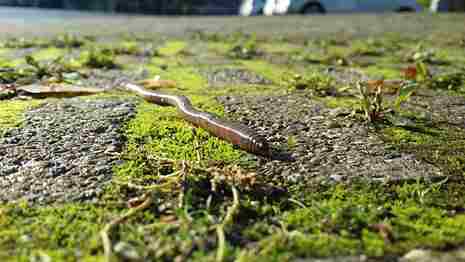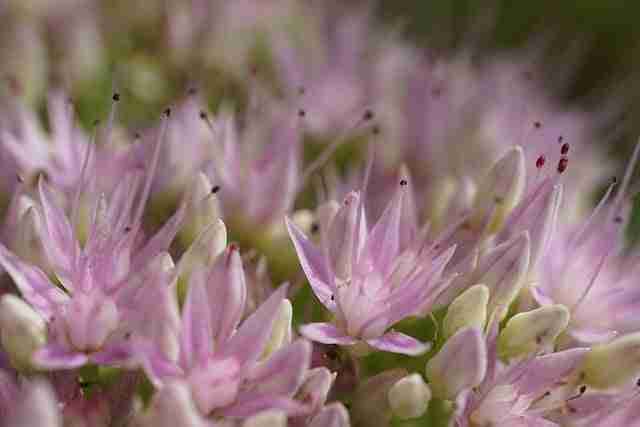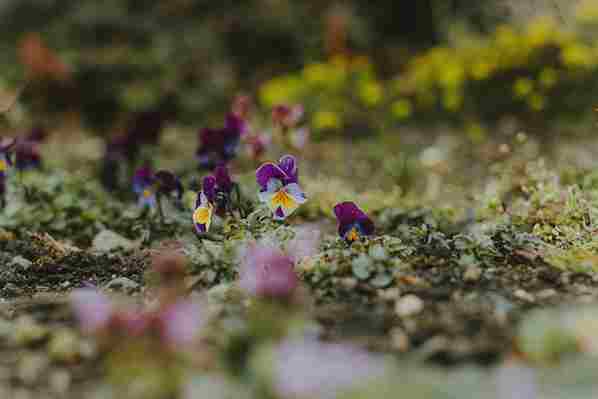Are Worms Herbivores? (Everything You Need To Know)
A lot of people believe worms are herbivores because of all the plant matter they eat in gardens. There are also those who believe they are carnivores since they are often found eating the remains of dead animals. You’ve probably seen them a couple of times crawling through the trash, being very “creepy.” But what exactly do they eat? Are worms herbivores?
Here, we will look at the diet of worms and see if they are herbivores, carnivores, omnivores, or even something else.

Are Worms Herbivores?
Worms eat both decaying plant and animal matter. This means that they are omnivores, not herbivores.
In most cases, the dead plant or animal has already been pre-decomposed by microorganisms, such as bacteria, protozoa, and fungi.
Worms may also be described as detritivores. Detritivores are animals that derive nutrients and energy from consuming decaying organic matter, which are usually dead plants and animals.
What Are Herbivores, Carnivores And Omnivores?
Animals in the food chain are categorized into three main categories based on whether they eat meat, plants, or both. These include herbivores, carnivores, and omnivores. Let’s look at each one in more detail:
Herbivores
Herbivores are animals whose diet consists of only plants. In other words, they ONLY eat plant materials, which usually include vegetation, shrubs, grasses as well as seeds. Examples of animals in this category include:
- Buffalo
- Elk
- Deer
- Cows
- Sheep
- Goat
- Rabbit
- Squirrel
- Mice, etc.
Herbivores are very important in the ecosystem because they also serve as food to carnivores. Since they rely on plants to stay alive, any shortage of plants can lead to their decline, which would also have an impact on carnivores.
Carnivores
Carnivores, unlike herbivores, do not eat plants. Instead, they feed on other animals, which may include insects and other animals of different sizes.
These include animals that are herbivores, omnivores (more on these later), and other carnivores. The activity of carnivores is very important in a natural habitat as they help to control the population in these areas.
Just like herbivores, carnivores come in different sizes. We have large ones, such as mountain lions and wolves, which have the ability to prey on large herbivores like deer and elk. There are also medium-sized ones, like snakes and hawks, that like to feed on birds, insects, and rodents. Smaller carnivores include toads, otters, and smaller birds. These like to feed on worms and insects.
A unique characteristic of most carnivores is the possession of sharp teeth and strong jaws, which they use to devour their prey.
Omnivores
Omnivores have a more diverse diet. This is because they can eat both plants and animals. However, they have a different digestive system from herbivores. In most cases, carnivores are not able to eat all of the plants that herbivores would normally eat. Besides animals, they mostly eat veggies and fruits; they typically don’t eat grasses and many types of grains. This is because their digestive systems are not developed to handle such foods.
As earlier indicated, omnivores also eat meat, which includes but not limited to insects, reptiles, small mammals, and so on. Examples of omnivores include bears, raccoons, dogs, birds, humans, foxes, pigs, certain insects, some fish, and, of course, worms.
In the case of worms, they usually eat “what” they’re moving through, which can be soil, decaying plant material, and even animal dung.
What Do Worms Eat?
Even though worms are generally considered omnivores, their diet primarily consists of decaying organic matter, such as dead leaves, plant material, and small microorganisms in the soil. They help break down these organic materials, which contribute to nutrient cycling in the ecosystem.
As a result, worms are also referred to as decomposers or detritivores, to be more specific.
Detritivores are a class of decomposers that feed on detritus. Detritus is simply a decaying plant or animal.
In general, there are three types or classes of decomposers. These include detritivores, saprophytes, and scavengers.
Worms are detritivores, as indicated above.
Saprophytes are also decomposers, and they feed on dead or decaying organic matter. The major difference between them and detritivores is that while detritivores have to seek out their food, saprophytes live and feed on dead matter.
Scavengers also feed on decaying matter, such as meat or a rotting plant; however, unlike detritivores and saprophytes, they are considerably bigger and feed on a large scale.
At this point, I would like to point out that detritivores are not the main or “true” decomposers, even though they also play an important role in the decomposition process. Bacteria, fungi, and protozoa are the main decomposers. Detritivores help to expose more of the decaying material so they can be broken down by the main decomposers.
Another key difference is that while the main decomposers can absorb nutrients through extracellular digestion, detritivores have to ingest theirs orally.
Other animals in this class include sea stars, beetles, termites, and millipedes.
Here’s a list of some common foods in the home worms eat:
- Dead leaves
- Grass clippings
- Old fruits
- Decaying plants
- Fruit and vegetable scraps
- Coffee grounds
- Tea bags
- Cardboard
- Newspaper
- Manure (from herbivores)
- Sawdust (in moderation)
- Eggshells
- Bacteria
- Fungi
- Coffee beans
- Bread and grains (in moderation)
- Corn cobs (chopped)
- Rice
- Pasta
- Cooked vegetables (unseasoned)
- Melon rinds
- Pumpkin
- Potato peels
- Banana peels
- Cucumber
- Animal waste or feces
- Food waste
- Microorganisms such as nematodes, protozoans, and rotifers.
In general, worms will eat just about anything that is available, whether it’s alive or was once alive.
It’s worth mentioning that worms have a very simple digestive system, which basically consists of a tube that runs from their mouth to their anus without any curves, bends, or coils. Once they digest food, the remains come out in tiny pellets known as castings.





